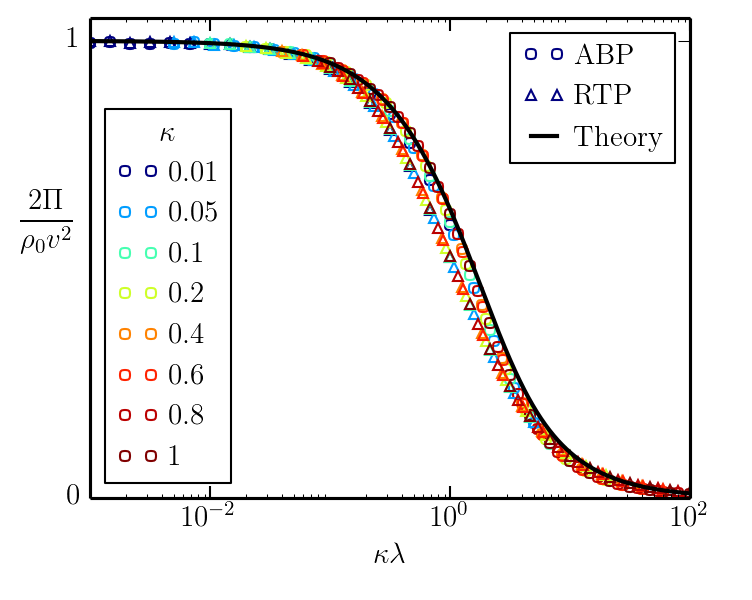Pressure of Active Matter
![]() Active matter? Some examples:
Active matter? Some examples:
Self-propelled colloidal particles Swimming Cells
Grains on vibrating plate
![]() Is there fluctuation-induced force in active matter?
Is there fluctuation-induced force in active matter?
"Fluctuation-Induced Casimir Forces in Granular Fluids,"
C. Cattuto, R. Brito, U.M.B. Marconi, F. Nori, and R. Soto, Phys. Rev. Lett. 96, 178001 (2006)
"Nonadditivity of Fluctuation-Induced Forces in Fluidized Granular Media,"
M.R. Shaebani1, J. Sarabadani, and D.E. Wolf, Phys. Rev. Lett. 108, 198001 (2012)
"Casimir effect in actice mtter systems,"
D. Ray, C. Reichhardt, and C.J. Olson Reichhardt, Phys. Rev. E 90, 013019 (2014)

The answer appears to be no long-ranged correlations or interaction.
![]() What is the Pressure of an Active particle fluid? Does it behave like an equilibrium system?
What is the Pressure of an Active particle fluid? Does it behave like an equilibrium system?
A. P. Solon, J. Stenhammar, R. Wittkowski, M. Kardar, Y. Kafri, M. E. Cates, J. Tailleur, Phys. Rev. Lett. 114, 198301 (2015);
A. P. Solon, Y. Fily, A. Baskaran, M. E. Cates, Y. Kafri, M. Kardar, J. Tailleur, Nature Phys. 11, 673 (2015)
Two common models are Run and Tumble Particles, and Active Brownian Particles:


Force and pressure can be measured by introducing a wall potential:

![]()
Reorientation of an active particle close to a wall can be independently specified:
No equation of state since pressure depends on the wall potential!
For non-interacting ellipses, pressure decreases when the torque increases:


 vs.
vs.